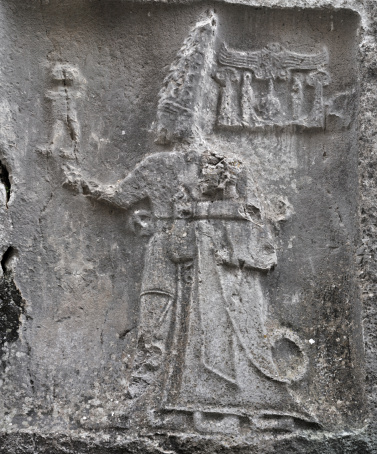 They moved in many directions and took their language with them. This language became the ancestor of just about all the languages spoken in Europe and India today. One group of these Aryans were the Hittites. They invaded Northern Mesopotamia, Babylon, Syria, and Palestine. The Hittites were some of the first people to discover how to make iron. While other people were still using bronze, the Hittites began making iron weapons and tools. Although they were able to keep their discovery secret for hundreds of years, knowledge of ironworking finally spread throughout the ancient Middle East, and the Bronze Age eventually gave way to the Iron Age.
They moved in many directions and took their language with them. This language became the ancestor of just about all the languages spoken in Europe and India today. One group of these Aryans were the Hittites. They invaded Northern Mesopotamia, Babylon, Syria, and Palestine. The Hittites were some of the first people to discover how to make iron. While other people were still using bronze, the Hittites began making iron weapons and tools. Although they were able to keep their discovery secret for hundreds of years, knowledge of ironworking finally spread throughout the ancient Middle East, and the Bronze Age eventually gave way to the Iron Age.
Southeast of Asia Minor, where Lebanon is today, was the land of Phoenicia. The Phoenicians were another group of people descended from the Aryans. Because they lived along the eastern shore of the Mediterranean Sea and had very little land they could farm, many Phoenicians turned to the sea to make a living. They became sailors, fishermen, builders and merchants. By learning to read the stars, they became skilled at sailing at night, which allowed them to travel long distances more easily. As they traveled from place to place, the Phoenicians spread the ideas, language and culture of the ancient Middle East and Mediterranean. They also carried many different material goods far and wide. They became known as “carriers of civilization.”
Follow Up Question
Without looking, name five things we would not have if the Hittites did not discover iron.
